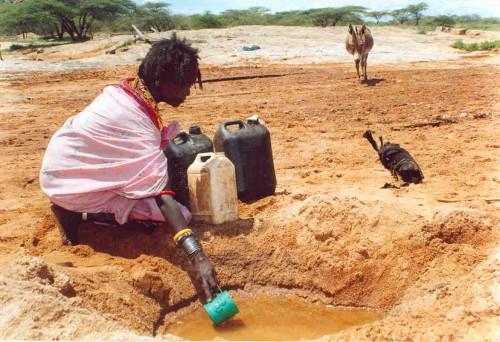A team of scientists from the Kenya Markets Trust (KMT) on Wednesday, April 11, 2018 shared all the key research findings of four different thematic studies conducted in Kenya under the Pathways to Resilience in Semi-Arid Economies (PRISE) project.

“The Kenya government is now focusing on the “Big Four” agenda aimed at improving livelihoods, creating jobs and growing the economy by focusing on critical areas of the economy in the next five years,” noted Kamau Kuria, the head of KMT.
“It is noteworthy that part of the PRISE study, which aimed at strengthening the understanding and knowledge of decision makers on the threats and opportunities that semi-arid economies face in relation to climate change, will go a long way in helping unlock the potential of semi-arid lands in Kenya and thus enhance their contribution to the national agenda,” he told delegates drawn from Kenya, Senegal, International Development Research Centre (IDRC) and Overseas Development Institute (ODI) during the event to disseminate key research findings in a Nairobi Hotel.
The study, which was commissioned by the International Development Research Centre (IDRC) Canada and the UK based Department for International Development (DFID) aims at supporting climate resilient economic development in partner countries by identifying opportunities for adaptation that are also opportunities for investment by the public and private sectors.
“These findings from Kenya will help change the narrative in semi-arid areas,” said Dr Eva Ludifrom the Overseas Development Institute (ODI), which is coordinating the PRISE project at a global level.
According to Dr Evans Kitui of IDRC, direct involvement of government officials both at the county and the national level is a pointer towards implementation of policies that will emanate from the four studies. “In the past, research has not been well appreciated. But now, we can see a lot of government participation,” he said.
One of the studies found that, in the past 50 years, temperatures have risen in all the 21 semi-arid counties in Kenya, with five of them recording an increase of more than 1.5oC increase. They include Turkana (1.8oC), West Pokot, ElgeyoMarakwet (1.91oC), Baringo (1.8oC), Laikipia (1.59oC) and Narok (1.75oC).
This, according to Dr Mohammed Said, one of the lead researchers, has impacted greatly on livestock survival, on one hand presenting a disaster, and on the other hand providing an opportunity that can be exploited.
“There were winners and losers,” he told delegates at the forum. “Generally, cattle do not survive the higher temperatures, while at the same time, sheep and goat population increased exponentially,” said Dr Said.
According to the study, whose theme was to harness opportunities for climate-resilient economic development in semi-arid lands and identifying the potential for economic transformation and diversification in semi-arid lands especially in the beef value chain, the overall population of cattle in all the semi-arid counties reduced by more than 26% between the year 1977 and 2016.
However, the study also reveals that goats and sheep population increased tremendously by 76% in the same period, with camels’ population increased by 14%. “This shows that goats, sheep and camels enjoyed the higher temperatures while cattle could not survive the stress,” said Dr Said.
“We’ve seen great potential for implementing some of the adaptation options and I call upon the stakeholders gathered here today, to pull together so we can build resilience and open up the ASALs for trade, investments and better livelihoods,” said Kuria of KMT.
In Nyeri County for example, Dr James Gakuo began with buying severely emaciated cattle for fattening at his farm in Kiganjo through intensive system of beef production that focuses on feeding cattle for 90 days on concentrate feeds till they reach the desired weight for the market, thereby creating a market for such animals that would otherwise have died.
In just two years, 14 other farmers have followed into his footsteps, and are in the business of fattening emaciated cattle thus providing more market to pastoralists who are hardly hit by tough climatic conditions.
Another study looked at the land tenure with special focus on Maasai pastoralist community in Kajiado County.
The study found out that 64 percent of the entire Kajiado County is now private land that is not open for grazing. “Though this has provided opportunity because privatisation can always lead to greater investment opportunities for those who can secure land, it marginalizes the poor and particularly women in the process,” said Dr Stephen Moiko, one of the lead researchers.
According to Dr Eva Ludi of ODI, these findings will be presented at the Talanoa Dialogue in Bonn, Germany come May 2018.
The purpose of the Talanoa Dialogue is for parties to share climate change related stories, build empathy and to make wise decisions for the collective good.
According to Dr Said, county governments should also take advantage of the research findings and scenario projections to develop their spatial plans.
“These findings will be important in formulation of new policies and strategies such as the National Climate Change Action Plan (NCCAP 2018-2022), the National Wildlife Conservation and Management Strategy, and the County Development Integrated Plans (CIDPs),” said Joseph Muhwanga, the PRISE project National Coordinator in Kenya.
Courtesy: PAMACC News Agency
